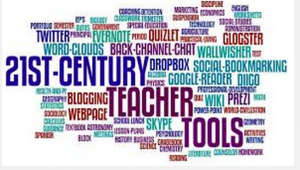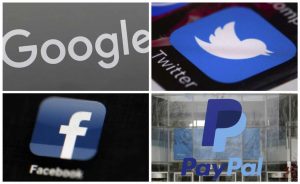Two events prodded me into writing this. The first was my formulating a technology plan for Memphis Entrepreneurship Academy and STEM Memphis . During this process I became increasingly concerned that while the school and parents leaders were keen to bring in technology to our community, and intuitively knew they should, they did not really know why.
The second event was an email I got from a teacher concerning my website www.MYMEAkid.org, we are in need of programs like this for our children. You can visualize the scene: I want to move technology into the entrepreneurial position so it gives the students a look at what is possible. Again I had to wonder if parents and schools really knew why they wanted the technology. In what way, precisely, would the education be better?
So here are some fundamental reasons why I think technology is important in education. Hopefully, they can act as the rationale for technology plans in schools and for parents to push for a change.
1. Expansion of time and place
In a typical school a student has access to a teacher 40 minutes per day. That means she has access to that teacher 5% of her waking day, and even that time is shared with 25 classmates. The student has access to the Internet 100%  of the time. That’s 20X better.
of the time. That’s 20X better.
Technology is no substitute for an inspiring teacher. However, on-line materials are far more available. Twenty times more.
Using the “textbook plus classroom” approach, the places where learning can occur are limited. On the other hand, a wireless laptop has access to the teacher’s course material and the entire Internet almost anywhere. This is also a vastly larger resource than can be practically carried on paper in a backpack.
Bottom line: information technology allows learning anywhere, anytime; not just in one particular classroom for forty minutes a day.
2. Depth of Understanding
Interactive simulations and illustrations can produce a much greater depth of understanding of a concept. When  virtual manipulatives are used in a classroom setting they can go far beyond chalk and talk. Using a projector, the teacher can conduct onscreen investigations and demonstrate concepts far more easily than with just words and arm-waving.
virtual manipulatives are used in a classroom setting they can go far beyond chalk and talk. Using a projector, the teacher can conduct onscreen investigations and demonstrate concepts far more easily than with just words and arm-waving.
Because the students have access to the same tools over the web, they can reinforce the ideas by experimenting with the simulations themselves, any time, any where.
3. Learning vs. Teaching
Technology allows the tables to be turned. Instead of teaching (push), students can be given projects that require  them to learn (pull) the necessary material themselves. Key to this is the ability to get the information they need anytime anywhere, without being in the physical presence of a teacher. This project-based pull approach makes learning far more interesting for the student. I have seen firsthand how students cannot wait to get out of regular classes to go to the after-school robotics project.
them to learn (pull) the necessary material themselves. Key to this is the ability to get the information they need anytime anywhere, without being in the physical presence of a teacher. This project-based pull approach makes learning far more interesting for the student. I have seen firsthand how students cannot wait to get out of regular classes to go to the after-school robotics project.
4. New media for self-expression
In the old days, students could write in a notebook, and what they wrote was seen only by the teacher. Using modern technology they can: Make a PowerPoint presentation, record/edit spoken word, do digital photography, make a video, run a class newspaper, run a web based school radio or TV station, do claymation, compose digital music on a synthesizer, make a website, create a blog.
make a video, run a class newspaper, run a web based school radio or TV station, do claymation, compose digital music on a synthesizer, make a website, create a blog.
The right hardware is important here. Students learn best when they create things, not when they just consume information, so laptops are much better than tablets like the iPad. IPads are seductive because they look a bit like electronic textbooks, but to use them that way is to ignore the huge benefits of computers over the textbooks. Cloud-based Chromebooks seem a better, easier managed and lower cost solution.
5. Collaboration
A vital skill in the new digital world is the ability to work collaboratively on projects with others who may not be

social network concept
physically close. This can best be done using modern computer tools such as the web, email, instant messaging and cell phone. Rather than laboring alone on homework, students can work in small groups wherever they happen to be and at any time. They are doing this already (it used to be called cheating) – it can now be formalized and taught as a vital skill. Many university projects are undertaken by teams spread around the world. Students need to be prepared for this.
6. Going Global
 The worldview of the student can be expanded because of the zero cost of communicating with other people around the globe. The Internet permits free video conferencing which permits interaction in real time with sister schools in other countries. From an educational viewpoint, what could be more important than understanding other cultures through direct dialog and collaboration?
The worldview of the student can be expanded because of the zero cost of communicating with other people around the globe. The Internet permits free video conferencing which permits interaction in real time with sister schools in other countries. From an educational viewpoint, what could be more important than understanding other cultures through direct dialog and collaboration?
7. Individual pacing and sequence
Students are, of course, all different. Information technologies can permit them to break step with the class and go at a pace and order that suits that student better. Without disrupting the class, they can repeat difficult lessons and explore what they find interesting. With time, it will become more like having a private tutor rather than being lost in a large class.
8. Weight
Three textbooks and three binders easily weigh over 25lb. A laptop computer weighs about 3lb and provides access to infinitely more material via its own storage and the Internet. A 40Gb hard drive can hold 2 million pages with illustrations; the web is unfathomably large. Right now, students are getting back injuries lugging around a tiny subset of what they need on 25lb of paper. And it’s just static, boring text.
9. Personal Productivity
Students need productivity tools for the same reasons you do. They need to write, read, communicate, organize and schedule. A student’s life is not much different from any knowledge worker, and they need similar tools. Even if they are never used in the classroom, computers and smartphones will make a student’s (and teacher’s) life more effective. To cash in this benefit, schools need to go paperless.
10. Lower Cost
It is not unusual for a textbook to cost over $120, and in community colleges, where they are purchased by the student, they can cost more than the tuition itself.
Through the use of open, free educational tools on the web, the dependence on expensive paper textbooks can be reduced. There is a growing movement to create and publish this type of material through organizations such as OER Commons. OER stands for Open Educational Resources and the idea is to follow the open source model made popular by software projects such as Linux. Material is created by the educational community itself then freely shared.
A cloud-based Chromebook laptop is $149, roughly the price of a one textbook. Right now we need both the paper books and the computer, but that is simply a transitional phase.
In Conclusion
If education is about knowledge and intellectual skills, then information technology lies at the heart of it all. We have only just begun this transition. School will eventually look very different. Get ready.

September 14, 2017
#8, is the reason why I have a nook. I have so many books, magazines, and movies on the tablet that can fit into my purse.
September 19, 2017
Thank you Ma’am 🙂